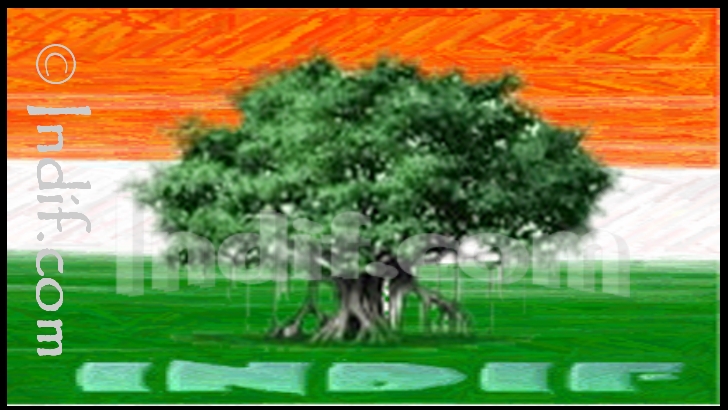The Banyan (Bargad) is the National tree of India - called the Indian fig tree(Ficus bengalensis) grow over a large area. One can see banyan tree through out India irrespective of region and climate, that might be the reason to consider it as national tree.
Banyan tree known in different names regionally, as Bargad, Bor, Ber, Ala, Nayagrodha, Bar, Vad, Vatnam, Bahupada, Peddamarri,VatVriksha, Marri Vrikshamu, Aal Maram, Vatavriksh, and Barh. The name was originally given to F. benghalensis and comes from India where early travellers observed that the shade of the tree was frequented by banias or Indian traders. Even today, the banyan tree is the focal point of village life and the village council meetings under the shade of this huge shade-giving tree.
Indian banyan root themselves to form new trees then give rise to more trunks and branches. Because of this characteristic & longevity, the Banyan tree is considered immortal & sacred and is an integral part of the myths and legends in India.
Hindus consider banyan or bargad as a sacred tree. As per belief, the leaf of bargad is the resting place of the Lord Krishna. Also there is a belief that Lord Dhakshina Murthy (Shiva) sits under this tree for meditation accompanied with rishies. The Vat, Bargad or Banyan tree is one of the most venerated trees in India. It has the ability to survive and grow for centuries and is often compared to the shelter given by God to his devotees In Hindu mythology, the tree is called Kalpavriksha, the tree that provides fulfilment of wishes and other material gains. It is also believed that banyan tree symbolizes Trimurti – Lord Vishnu is believed to be the bark, Lord Brahma the roots, and Lord Shiva the branches.
According to another belief, Bhagavan Buddha achieved enlightenment while meditating under a banyan tree at Bhod Gaya(Bihar), so also called Bodhi vriksha.
Banyan tree is also well known for its medicinal values in AyurVeda. The leaf buds of Banyan are beneficial in the treatment of chronic diarrhoea and dysentery. It's sap is a medicine for treating external skin problems and infections. Diabetic patients are also treated by the tonic made from banyan tree. Cleaning the teeth with the aerial roots of the Banyan is beneficial in preventing teeth and gum disorders. n India the twigs of banyan tree are sold as toothpicks , it is believed that it promotes dental health.
In addition to the medicinal uses of the banyan tree, it is also known to have a variety of other uses such as the milk sap of the banyan tree is used in some countries for polishing brass and copper. Similarly the banyan tree produces a special type of rubber and the sticky milk of the banyan tree is also known to be used in gardening.
The Banyan tree is also known to produce shellac which is commonly used as a surface finisher and an adhesive in the industrial world. This shellac is typically produced by lac insects that are known to act as parasites and live off the banyan tree.
In India, the broad leaves of the banyan tree are also dried and used as plates and the wood of the banyan tree is also used for door panels, well curbs, furniture and boxes.









